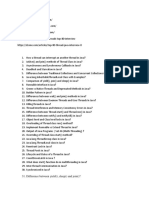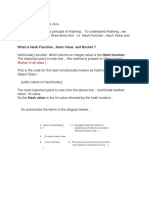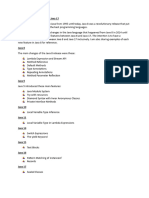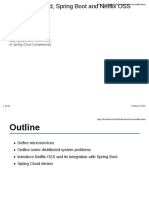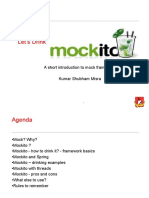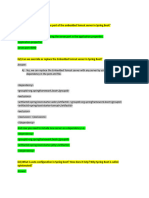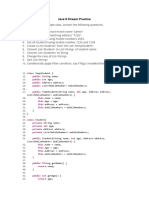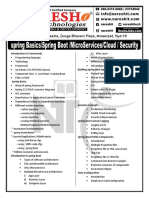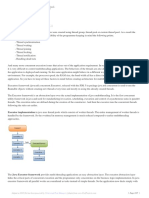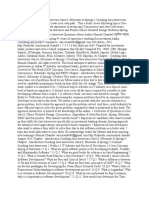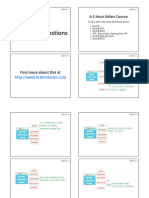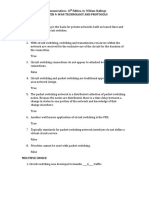0% found this document useful (0 votes)
384 views17 pagesIntroduction to Kafka & Microservices
This chapter introduces Kafka and provides an overview of key concepts. It discusses microservices architecture and how messaging fits into it. Kafka is an open-source messaging system that allows publishing and subscribing to streams of records. It is highly scalable, fault-tolerant, and very fast. The chapter covers Kafka's architecture, including topics that messages are published to, producers that publish messages, consumers that subscribe to topics, and brokers that manage the data.
Uploaded by
Suchismita SahuCopyright
© © All Rights Reserved
We take content rights seriously. If you suspect this is your content, claim it here.
Available Formats
Download as PDF, TXT or read online on Scribd
0% found this document useful (0 votes)
384 views17 pagesIntroduction to Kafka & Microservices
This chapter introduces Kafka and provides an overview of key concepts. It discusses microservices architecture and how messaging fits into it. Kafka is an open-source messaging system that allows publishing and subscribing to streams of records. It is highly scalable, fault-tolerant, and very fast. The chapter covers Kafka's architecture, including topics that messages are published to, producers that publish messages, consumers that subscribe to topics, and brokers that manage the data.
Uploaded by
Suchismita SahuCopyright
© © All Rights Reserved
We take content rights seriously. If you suspect this is your content, claim it here.
Available Formats
Download as PDF, TXT or read online on Scribd
/ 17

















